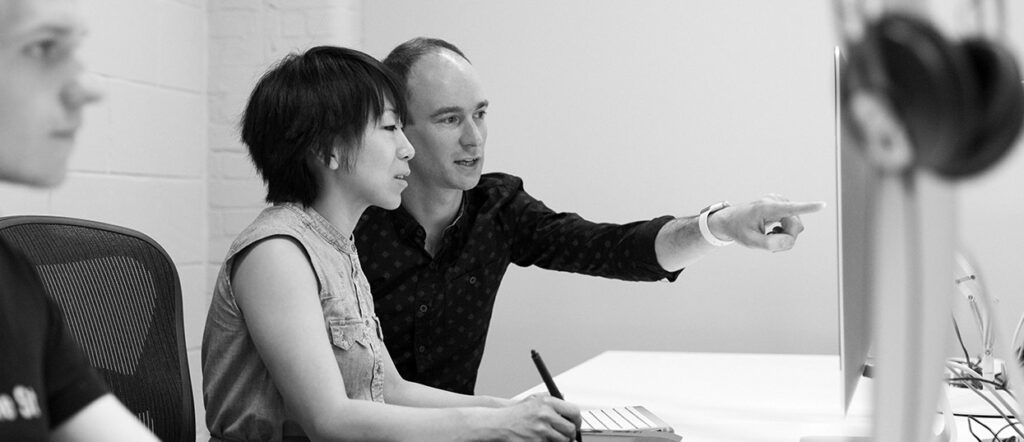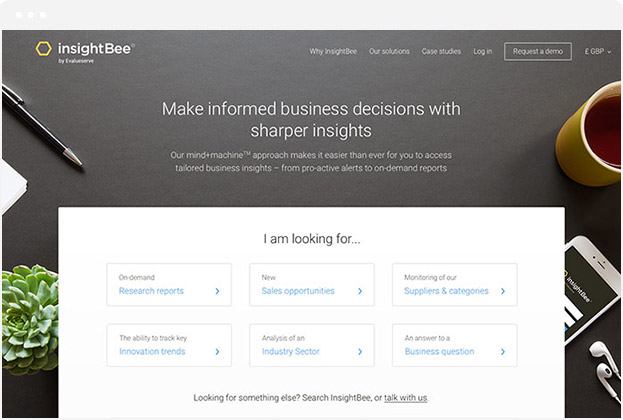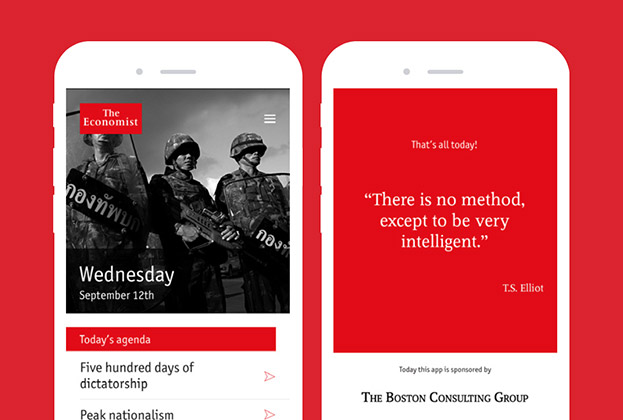UX Design Agency London
A positive user experience (UX) is fundamental to the principles of good design and essential to the successful operation of a good product or website.
Creating powerful products users love. Any good businessperson knows that the customer knows best. We help companies build websites and tools which give users precisely what they want, before they’ve even thought to ask.
In today’s competitive online world, that extra level of service is what makes businesses stand out. It’s brands which can anticipate what customers want and need, then deliver it as part of a seamless experience, who stand to win. And that’s where UX design (User Experience) design comes in.
US-based consulting firm Walker Information predicts that by 2020 customer experience will overtake price and product as the key brand differentiator.
Walker Information
What we make
From mobile apps and websites, to programmes and services, we make interactive systems which are beautifully easy to use. There’s a huge list of reasons why a digital experience may be tricky for users to get to grips with, whether it’s a website which takes ages to load or a product with too many features.
Whatever the complicating factor, our UX design experts use their skills in IA, UI, web design, app design, interaction design, user testing and validation to transform your product for the better. We take care of every part of the process ourselves, ensuring a completely seamless result.

We understand UX design
We live and breathe UX design at Every Interaction. We believe in a world where no-one needs a training manual to use a new program and where smart systems are blissfully simple to operate. We want to keep the basics simple and make tricky tasks manageable.
To achieve this we work flexibly, tailoring our approach to fit neatly into any existing working method. Every project, client and target audience is different, which is why we approach every new task afresh. We do, however, have some techniques and steps we like to use to help develop immaculate UX design:
Researching
We kick start every project with thorough research. We use a range of processes, including whiteboarding and persona development, to learn as much as we can about your users, your service and your ambitions before we get underway. We also invest time in learning from the true experts on your product – you! We harness your insights, data and research to understand your requirements inside out.Imagining
It’s time to get creative. We collaborate as a team, and with your business, to generate the inspiration and ideas which will evolve into your final design.Building
We put all of that research and creativity into practice, developing our very first iteration of your website or tool.Testing
We put our “first draft” through its paces, working as a team and with your input to identify possible issues as well as areas for improvement. We may also run user testing to generate even more insight into how the new design works.Perfecting
We set to work implementing the changes highlighted by our testing stage. We run through this “testing and perfecting” cycle many times until we have build a flawless piece of technology which ticks all of your users’ boxes – and yours too.
Best practice
We embrace a blend of best practice and new technology, employing the best of both worlds to deliver cutting edge projects, founded on proven techniques and extensive experience.
We also work collaboratively. From our colleagues, to our clients, we think that the best ideas and insights are generated when communication and collaboration is open and easy. We work with both local and international clients, using the latest in communication technology to make working together simple, convenient, organic and productive. Read more about our approach.
Every Interaction in action
You know the theory, now what does all of this achieve in practice? We’ve helped brands and businesses from all over the world boost their conversion rates, increase visitor numbers, maximise enquiries and achieve goals unique to them. Recently, we’ve helped to…
Boost The Economist Espresso to #1 in its category, with 750,000 daily users
Increase enquiries on Athena’s new website by 210%
Increase order enquiries by 400% for Bouncepad
Grow traffic by four times for Hot Topics
Slash report creation time in half for InsightBee, helping them grow by 30%
Example UX design projects
UX deign is at the core of our offering and touches every project we deliver. So below are a few example projects we feel had particularly interesting user experience challenges to resolve with overwhelming successful results. View all projects.
Other services you may be interested in
Contact us about your project
Thank you for your enquiry.



